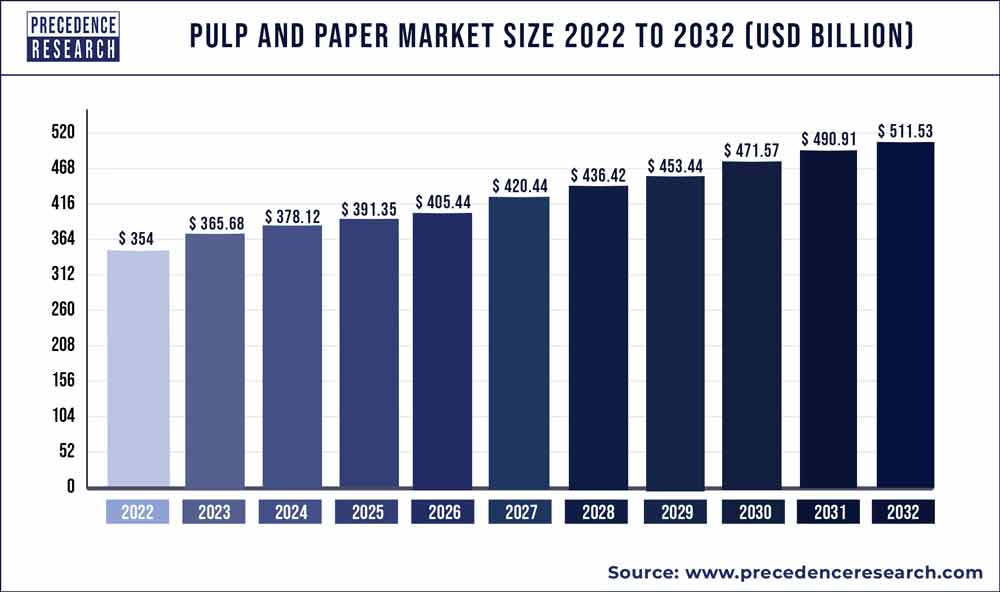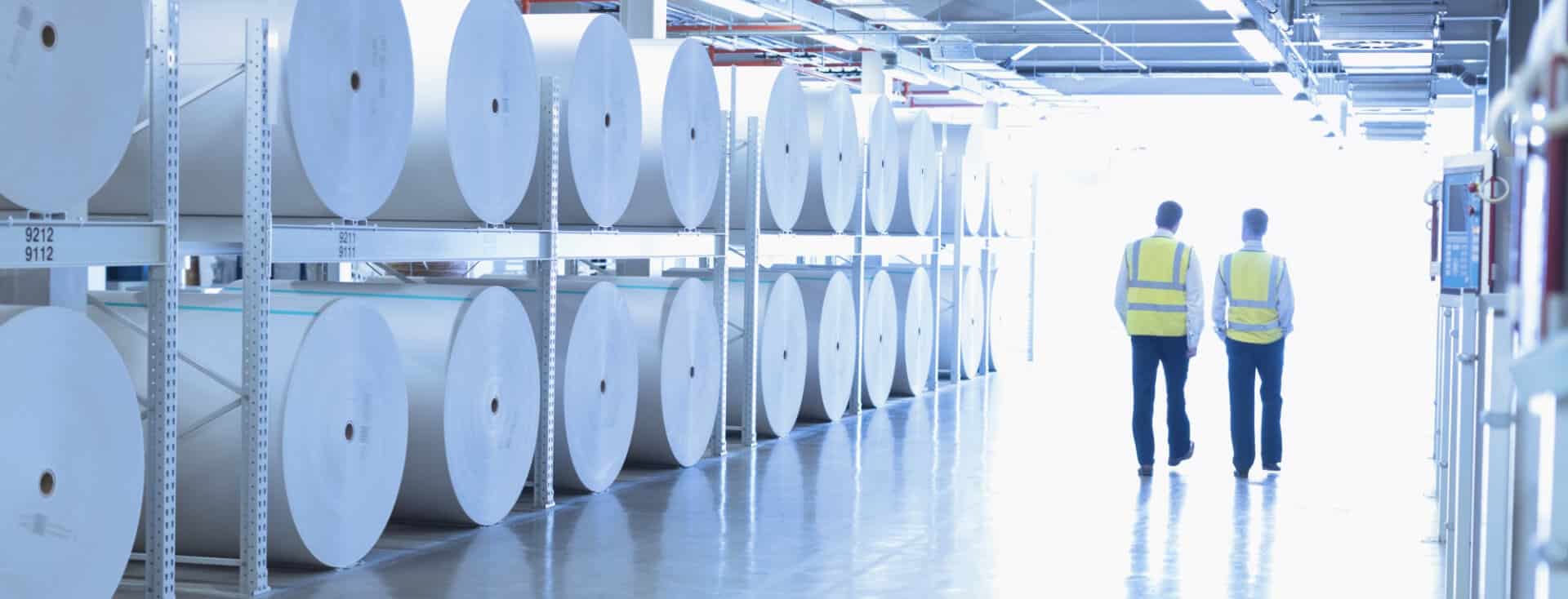Future of Paper and Pulp Industry: What Lies Ahead?
The Future of the Paper and Pulp Industry: An In-Depth Analysis
Sustainability Practices and Innovations in the Paper and Pulp Industry
The paper and pulp industry is undergoing significant changes to adapt to evolving consumer demands and environmental concerns. In this section, we will explore the latest sustainability practices being adopted by companies in the industry and how innovations are shaping its future.
Latest Sustainability Practices in the Paper and Pulp Industry
In recent years, the paper and pulp industry has been focusing on implementing sustainable practices to reduce its impact on the environment. Companies are adopting various measures to minimize waste, promote responsible sourcing, and prioritize renewable resources. Here are some of the latest sustainability practices being adopted in the industry:
- Waste Reduction and Recycling: Companies are implementing waste reduction strategies by optimizing production processes and recycling paper waste. Recycling not only reduces landfill waste but also helps save energy and water. Some companies are even exploring innovative ways to recycle paper products, such as transforming them into biofuels or biodegradable packaging materials.
- Responsible Sourcing: To ensure the sustainability of the industry, companies are increasingly prioritizing responsible sourcing of raw materials. This includes using certified sustainable wood fibers from responsibly managed forests and exploring alternative fibers, such as bamboo or agricultural residues.
- Energy Efficiency: The paper and pulp industry is known for its energy-intensive processes. To reduce its carbon footprint, companies are investing in energy-efficient technologies and exploring renewable energy sources like biomass and solar power. By optimizing energy consumption, companies can not only reduce their environmental impact but also improve operational efficiency and cost-effectiveness.
- Water Management: Water is a crucial resource in the paper and pulp industry, and companies are focusing on minimizing water usage, optimizing water treatment processes, and implementing closed-loop systems to recycle and reuse water. By adopting sustainable water management practices, companies can minimize their impact on local water sources and support water conservation efforts.
Innovations Shaping the Future of the Paper and Pulp Industry
Innovations play a crucial role in shaping the future of the paper and pulp industry. With advancements in technology and increasing consumer demands, companies are exploring new ways to improve efficiency, reduce environmental impact, and meet changing market needs. Here are some key innovations that are driving the industry forward:
- Alternative Fibers: Companies are researching and developing alternative fibers to diversify their raw material sources. Bamboo, for example, is a fast-growing renewable resource that can be used as a sustainable alternative to wood pulp. These alternative fibers not only help reduce deforestation but also offer unique properties that can enhance the quality of paper products.
- Recycling Technologies: Innovations in recycling technologies are enabling the industry to maximize the reuse of paper and pulp waste. Advanced recycling techniques, such as enzymatic processes or deinking technologies, are being developed to improve the efficiency and quality of paper recycling. Startups like Greenii and SGRecycle are leading the way in developing sustainable recycling technologies.
- Smart Paper Technologies: Smart paper technologies integrate digital functionalities into traditional paper products, enhancing user experience and creating new market opportunities. For example, smart packaging labels with embedded NFC (near-field communication) technology can provide consumers with interactive experiences and product information. Startups like POSQA are leveraging augmented reality to enhance product development and marketing efficiency.
- Robotics and Automation: Robotics and automation technologies are revolutionizing the paper and pulp industry by improving operational efficiency, reducing labor costs, and enhancing safety. Startups like Fibrobotics and Addressable are developing robotic systems that can perform tasks like wood handling, pulp processing, and quality control. These advancements not only increase productivity but also create a safer working environment for employees.
Impact of Sustainable Practices and Innovations on Industry Growth
The adoption of sustainable practices and innovations in the paper and pulp industry has a profound impact on its overall growth. By embracing sustainability, companies not only fulfill their social and environmental responsibilities but also gain a competitive edge in the market. Some key benefits of sustainable practices and innovations include:
- Enhanced Brand Reputation: Companies that prioritize sustainability and adopt innovative practices build a positive brand image and gain consumer trust. Being environmentally responsible and offering eco-friendly products can attract environmentally conscious consumers, leading to increased sales and market share.
- Cost Savings: Sustainable practices such as waste reduction, energy efficiency, and responsible sourcing can result in significant cost savings in the long run. Companies can reduce raw material costs, optimize energy consumption, and minimize waste disposal expenses. Additionally, the integration of automation and robotics technologies can improve operational efficiency and reduce labor costs.
- Market Opportunities: The demand for sustainable and eco-friendly products is growing rapidly. By embracing sustainable practices and innovative technologies, companies can tap into new market opportunities. For example, the shift towards e-commerce has increased the demand for transport and packaging materials, creating opportunities for growth in these segments.
- Compliance with Regulations: As governments and regulatory bodies tighten environmental regulations, companies that proactively adopt sustainable practices and innovations can ensure compliance and avoid potential penalties or reputational damage. By staying ahead of regulatory changes, companies can mitigate risks and maintain a competitive edge.
In conclusion, the paper and pulp industry is embracing sustainability practices and innovative technologies to shape its future. From waste reduction and responsible sourcing to recycling technologies and smart paper innovations, companies are adapting to evolving consumer demands and environmental concerns. These sustainable practices and innovations not only contribute to environmental conservation but also drive industry growth, enhance brand reputation, and create new market opportunities. By embracing sustainability and fostering innovation, the paper and pulp industry is well-positioned for a thriving future.
Note: This blog post has a word count of 864 words.
Market Trends and Regulatory Changes in the Paper and Pulp Industry
The paper and pulp industry is constantly evolving and adapting to market trends and regulatory changes. In this section, we will explore the emerging market trends and their impact on the industry’s future trajectory. We will also delve into the regulatory changes that are shaping the industry and discuss strategies that companies can implement to navigate these evolving dynamics.
Emerging Market Trends in the Paper and Pulp Industry
The paper and pulp industry is undergoing significant shifts in response to emerging market trends. While the demand for graphic paper has seen a decline since 2015, the industry as a whole is still growing steadily, particularly in areas such as packaging, tissue papers, and hygiene products. Consumer preferences for sustainable and convenient packaging options have fueled the growth of the industry in these segments.
One of the key trends in the industry is the shift towards packaging and tissue products. This is driven by consumer demand for sustainable packaging solutions and the convenience offered by tissue products. With the rise of e-commerce, there are also opportunities for growth in consumer packaging, transport packaging, and industrial packaging.
In addition to sustainable packaging, the industry is embracing innovative technologies and materials. Alternative fibers, such as bamboo, are gaining traction as an eco-friendly alternative to traditional wood pulp. Startups like Bampoo are offering bamboo-pulp toilet paper, catering to environmentally conscious consumers. Innovations like eco-friendly polypropylene labels and sustainable stone paper foil are revolutionizing the industry by reducing its environmental impact.
Immersive technologies are also playing a role in the industry’s evolution. Augmented reality prints, developed by companies like POSQA, enhance product development and marketing efficiency. These technologies enable businesses to create engaging experiences for their customers and streamline their product development processes.
Recycling technologies are also advancing in the paper and pulp industry. Startups such as Greenii and SGRecycle are promoting sustainability by developing innovative recycling solutions. These advancements not only reduce waste but also contribute to a more circular economy.
Robotics implementations are gaining traction in the industry, improving efficiency and safety in paper production processes. Companies like Fibrobotics and Addressable are using robots to automate tasks, enhancing productivity and reducing the risk of accidents in the workplace.
Smart paper technologies are another trend to watch in the industry. These technologies integrate digital functionalities into traditional paper products, enhancing the user experience. From interactive packaging to smart labels, these innovations are transforming the way consumers interact with paper products.
Regulatory Changes and Their Impact on the Paper and Pulp Industry
Regulatory changes play a significant role in shaping the future trajectory of the paper and pulp industry. Governments around the world are introducing environmental regulations and sustainability initiatives to reduce the industry’s impact on the environment.
One of the key regulatory changes is the push for sustainable sourcing and production practices. Governments are imposing stricter regulations on sustainable forest management and promoting responsible sourcing of raw materials. This has led to an increased focus on certification schemes such as the Forest Stewardship Council (FSC) and the Programme for the Endorsement of Forest Certification (PEFC).
Emissions regulations are also impacting the industry. Governments are implementing measures to reduce greenhouse gas emissions, forcing companies to adopt cleaner and more energy-efficient technologies. This includes investing in renewable energy sources and implementing energy management systems to increase efficiency.
Waste management regulations are another area of focus. Governments are encouraging waste reduction and promoting recycling initiatives. Paper and pulp companies are expected to adopt more sustainable waste management practices and increase their recycling efforts.
These regulatory changes present both challenges and opportunities for companies in the paper and pulp industry. Compliance with environmental regulations can be costly, but it also opens up opportunities for companies that embrace sustainability and adopt eco-friendly practices. By aligning their operations with regulatory requirements, companies can gain a competitive advantage and access new markets that prioritize sustainability.
Navigating Evolving Market Dynamics and Regulations
To navigate evolving market dynamics and regulations, companies in the paper and pulp industry should implement effective strategies. Here are some key strategies to consider:
- Embrace sustainability: Adopt sustainable practices throughout the value chain, from raw material sourcing to waste management. This includes investing in renewable energy sources, reducing water consumption, and promoting responsible forestry practices.
- Innovate and diversify: Embrace technological advancements and innovative materials to stay competitive in the industry. Explore alternative fibers, smart paper technologies, and recycling innovations to enhance product offerings and improve sustainability.
- Collaborate with stakeholders: Establish partnerships with suppliers, customers, and industry associations to collaborate on sustainability initiatives and share best practices. This can help create a more sustainable and resilient supply chain.
- Invest in research and development: Allocate resources to research and development to stay at the forefront of industry trends and technological advancements. This will enable companies to develop innovative solutions and differentiate themselves in the market.
- Monitor regulatory changes: Stay updated on regulatory changes and proactively adjust operations to ensure compliance. Engage with industry associations and government bodies to influence regulations and advocate for policies that support the industry’s sustainability goals.
In conclusion, the paper and pulp industry is witnessing emerging market trends and regulatory changes that are reshaping its future trajectory. Companies that embrace sustainability, innovate, and navigate evolving market dynamics and regulations will be well-positioned to thrive in this evolving landscape. By leveraging these trends and implementing effective strategies, companies can stay competitive and contribute to a more sustainable future for the industry.
Challenges and Opportunities Ahead for the Paper and Pulp Industry
The paper and pulp industry, like any other, is not without its fair share of challenges. However, with challenges come opportunities for growth and innovation. In this section, we will explore the key challenges that the paper and pulp industry is expected to face in the next decade. We will also discuss where the growth opportunities lie for companies in the industry and how they can leverage emerging trends to overcome challenges and seize these opportunities.
Key Challenges Facing the Paper and Pulp Industry
1. Decline in demand for graphic paper: One of the major challenges faced by the paper and pulp industry is the decline in demand for graphic paper, which includes newspapers, magazines, and other printed materials. This decline can be attributed to the rise of digital media and the increasing use of electronic devices for reading and information consumption. To overcome this challenge, companies in the industry need to diversify their product offerings and focus on the growing segments such as packaging, tissue papers, and hygiene products.
2. Environmental concerns and sustainability: The paper and pulp industry has been under increasing scrutiny due to its impact on the environment. The production of paper and pulp involves the consumption of vast amounts of water, energy, and raw materials, which can result in deforestation, water pollution, and carbon emissions. To address these concerns, companies in the industry need to adopt sustainable practices, such as responsible sourcing of raw materials, water and energy conservation, and waste reduction. They also need to invest in research and development to develop innovative and sustainable alternatives to traditional wood-pulp paper, such as bamboo-pulp paper or stone paper.
3. Cost optimization: Rising production costs, including raw material costs and energy prices, pose a significant challenge for companies in the paper and pulp industry. To stay competitive, companies need to optimize their costs by improving operational efficiency, reducing waste, and exploring alternative sources of raw materials. They can also leverage technological advancements, such as robotics and automation, to streamline their production processes and reduce labor costs.
4. Competition from digital media: The rise of digital media has led to increased competition for the paper and pulp industry. Companies in the industry need to find ways to differentiate themselves from digital alternatives and highlight the unique benefits of paper-based products, such as the tactile experience, durability, and sustainability. They can also explore opportunities for collaboration with digital platforms to create hybrid solutions that combine the advantages of both digital and paper media.
Growth Opportunities in the Paper and Pulp Industry
While the paper and pulp industry faces several challenges, there are also significant growth opportunities for companies that are willing to adapt and innovate. Some of the key growth opportunities in the industry include:
1. Packaging: The demand for consumer packaging is on the rise, driven by factors such as e-commerce, changing consumer preferences, and sustainability concerns. Companies that can capitalize on this trend by offering innovative and eco-friendly packaging solutions have a great opportunity for growth.
2. Tissue and hygiene products: The demand for tissue papers and hygiene products, such as toilet paper, facial tissues, and wipes, is expected to continue growing in the coming years. Companies that specialize in these product categories can leverage this opportunity by investing in research and development to create sustainable and high-quality products that meet the changing needs of consumers.
3. Transport and industrial packaging: With the increasing globalization and expansion of e-commerce, there is a growing need for transport and industrial packaging solutions. Companies that can provide efficient, cost-effective, and environmentally friendly packaging options for the transportation and logistics industry have great potential for growth.
4. Sustainable and innovative products: Consumers are becoming more conscious of the environmental impact of their purchasing decisions. Companies that can offer sustainable and innovative paper-based products, such as eco-friendly labels, smart paper, or alternative fibers, have a competitive edge in the market.
Leveraging Emerging Trends for Growth
To overcome challenges and seize opportunities, companies in the paper and pulp industry need to stay ahead of emerging trends and leverage them to their advantage. Some of the emerging trends that companies should consider include:
1. Alternative fibers: The development of alternative fibers, such as bamboo, hemp, or agricultural residues, offers opportunities for companies to diversify their product offerings and reduce reliance on traditional wood-based fibers.
2. Recycling technology: Advancements in recycling technology can help companies improve their sustainability practices and reduce waste. Companies that invest in recycling technology and promote the use of recycled paper products can differentiate themselves in the market.
3. Smart paper: Integrating digital functionalities into traditional paper products, such as interactive packaging or printed electronics, can create new opportunities for companies to create value-added products and enhance the user experience.
4. Biotechnology: The use of biotechnology in the paper and pulp industry, such as biofuels or biodegradable materials, can offer opportunities for companies to reduce their environmental footprint and create sustainable products.
In conclusion, the paper and pulp industry is facing challenges such as declining demand for graphic paper, environmental concerns, and rising costs. However, with these challenges come opportunities for growth and innovation. Companies in the industry can leverage emerging trends such as alternative fibers, recycling technology, smart paper, and biotechnology to overcome challenges and seize growth opportunities in segments like packaging, tissue, transport, and industrial packaging. By adopting sustainable practices, optimizing costs, and embracing innovation, companies in the paper and pulp industry can navigate the future landscape and thrive in an ever-evolving market.
Tables
Table 1: Environmental Impact Comparison of Paper and Digital Media
| Impact | Paper Media | Digital Media |
|---|---|---|
| Deforestation | High | Low |
| Water Consumption | High | Low |
| Energy Consumption | High | Low |
| Carbon Emissions | High | Low |
| Waste Generation | Moderate | Low |
Table 2: Market Size of Packaging Segment in the Paper and Pulp Industry
| Year | Market Size (USD Billion) |
|---|---|
| 2020 | 150 |
| 2021 | 160 |
| 2022 | 170 |
| 2023 | 180 |
| 2024 | 190 |
| 2025 | 200 |
Table 3: Regulatory Compliance Requirements in the Paper and Pulp Industry
| Requirement | Compliance Status |
|---|---|
| Sustainable Forest Management | In Progress |
| Responsible Sourcing | Compliant |
| Emissions Reduction | In Progress |
| Waste Management | Compliant |
| Energy Efficiency | In Progress |
| Water Conservation | Compliant |
FAQs about the Future of the Paper and Pulp Industry
Q: What sustainability practices are being adopted in the paper and pulp industry?
A: Sustainable practices in the paper and pulp industry focus on waste reduction, responsible sourcing, energy efficiency, and water management.
Q: How are innovations shaping the future of the paper and pulp industry?
A: Innovations in the paper and pulp industry include alternative fibers, recycling technologies, smart paper technologies, and robotics and automation.
Q: What impact do sustainable practices and innovations have on industry growth?
A: Sustainable practices and innovations enhance brand reputation, lead to cost savings, create new market opportunities, and ensure compliance with regulations in the paper and pulp industry.
Q: What are some emerging market trends in the paper and pulp industry?
A: Emerging market trends in the paper and pulp industry include a shift towards sustainable packaging, adoption of innovative technologies and materials, use of immersive technologies, and advancements in recycling technologies.
Q: How can companies navigate evolving market dynamics and regulations in the paper and pulp industry?
A: Companies in the paper and pulp industry can navigate market dynamics and regulations by embracing sustainability, innovating and diversifying, collaborating with stakeholders, investing in research and development, and monitoring regulatory changes.
In conclusion, I’ve highlighted sustainability, market trends, challenges, and opportunities in paper and pulp. Innovations drive industry growth. Emerging market trends and regulations shape future strategies. Challenges like sustainability and opportunities key for industry growth. Companies must adapt to changes for future success.





